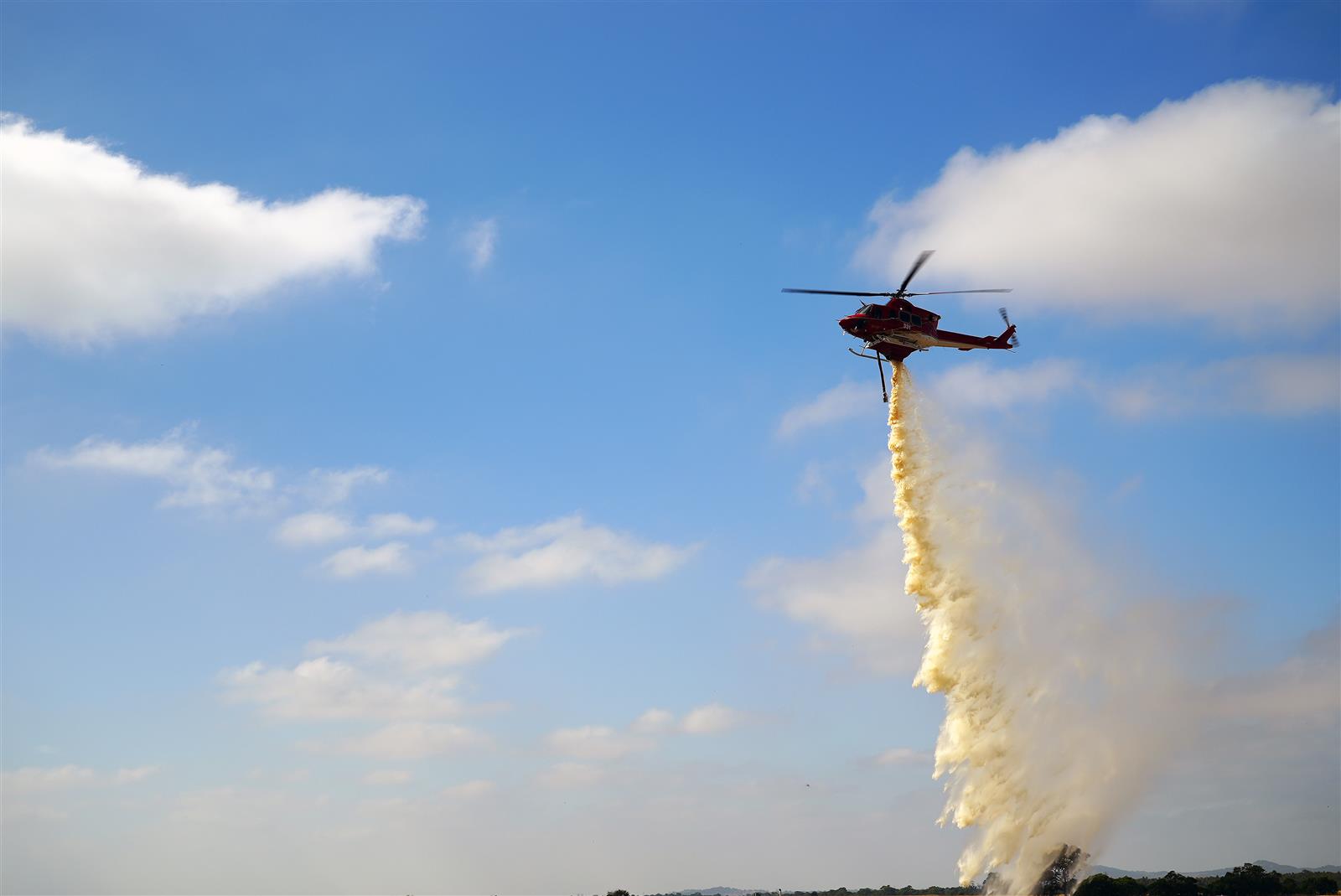 Helitak making a water drop over a Balliang field.
Helitak making a water drop over a Balliang field.
Victoria’s water bombing aircraft have been put to the test to help determine the best aircraft tank to use in the future.
Staff from multiple emergency service agencies have been working in a field at Balliang over the past week to assist with a research project looking at water drop patterns.
Bushfires in Victoria exhibit a wide range of behaviours and have different suppression needs.
CFA on behalf of fire management agencies has been commissioned to better understand what makes one drop different to another so that we can make the most of our suppression tools and strategic investments.
Many factors can impact the effectiveness of a water drop. Some of these include weather and atmospheric conditions, aircraft speed, height and altitude, the volume of water to be dropped and the rate it's released, the design of the aircraft delivery system and engineering.
CFA's Predictive Services Specialist Andy Ackland said every year Victoria's firefighting aircraft play an important role in helping to control bushfires and protect communities from fire.
"These experiments look at measuring the performance of the air drops so we literally measured the water drops that came from the aircraft tank as well as the spread pattern, coverage, and the amount of water used so that we can try to understand the effectiveness of wetting the ground and helping to control fires," Andy said.
A Helitak was used to make five water drops over a grid of plastic cups mounted on wooden stakes three metres apart.
After each drop the cups were capped with a barcoded lid and transferred to a weighing station where they were scanned and weighed.
"It's good that we can get some objective measurement of the performance of the different aircraft tank designs to use in certain fuel types so we can actually understand the performance of aircraft in different circumstances.
"I'm hoping by later this year we might have some insights into the relative performance of the aircraft.
“We may still have more aircraft to test next spring but it's going to be really good to have some of that baseline data.
“CFA scientists can look into the relative performance and we can start planning the future fleet and also factors such as positioning and the effectiveness in different parts of the state.”
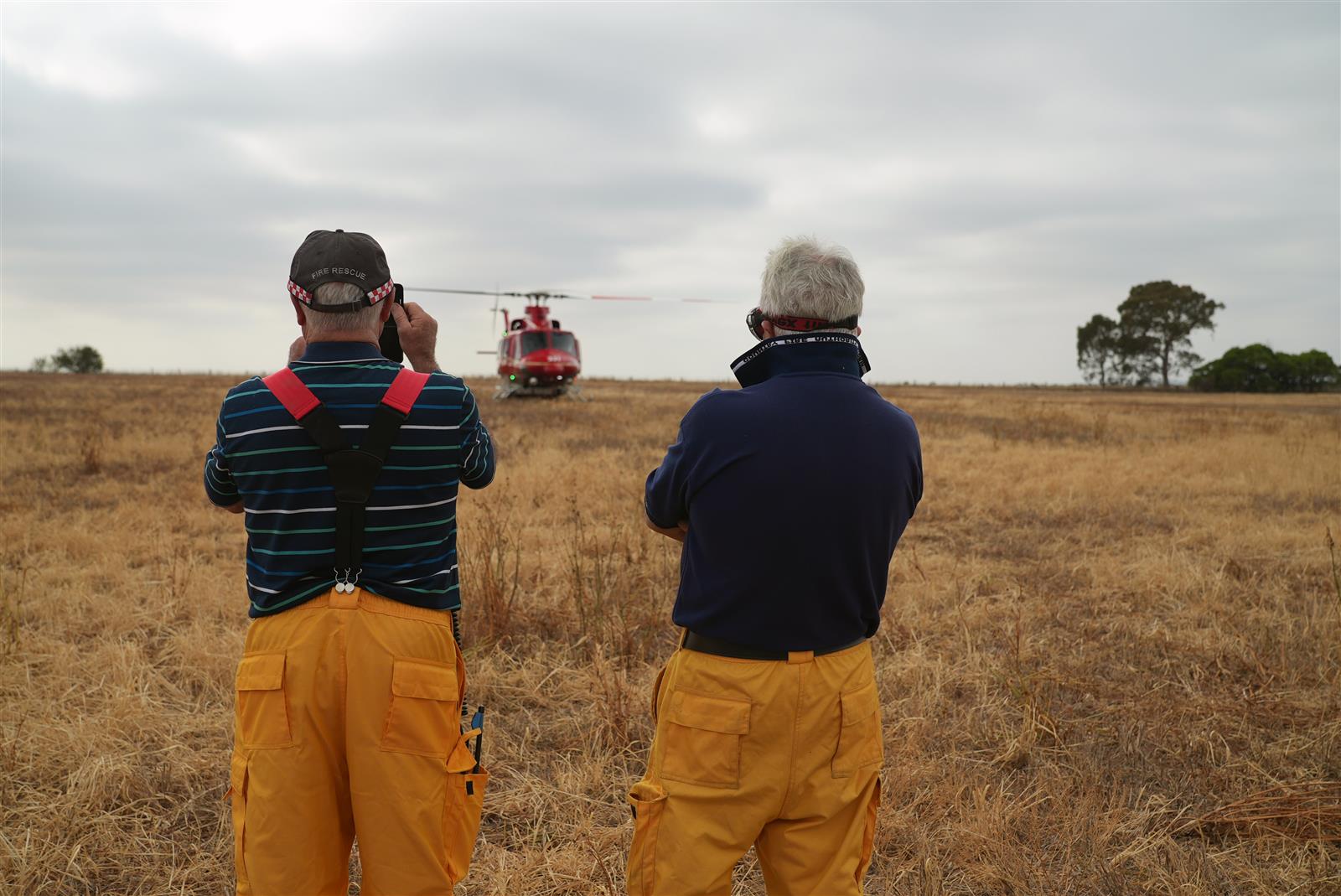 Volunteers watch as the Helitak prepares to take off
Volunteers watch as the Helitak prepares to take off-
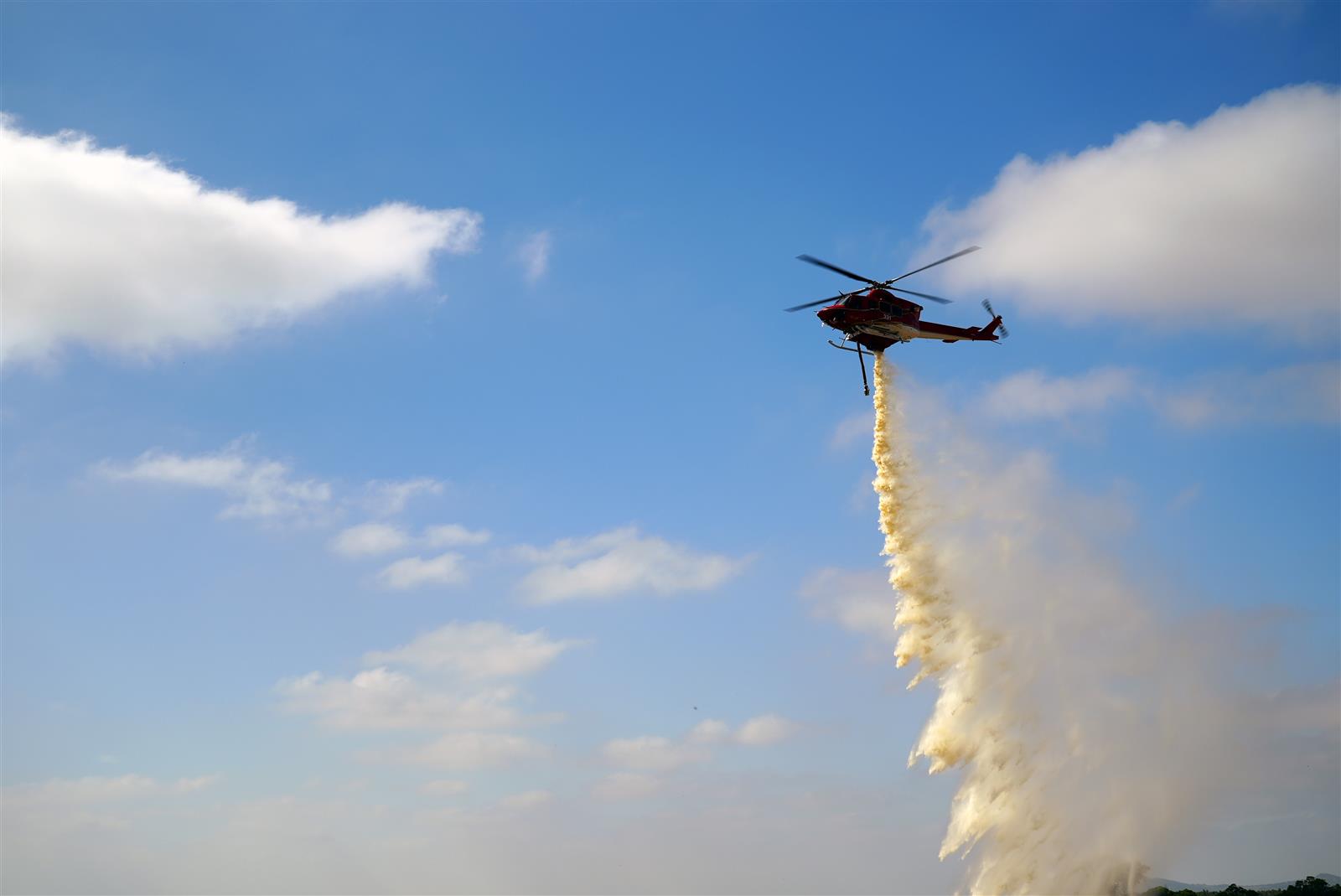 A water drop in progress
A water drop in progress
-
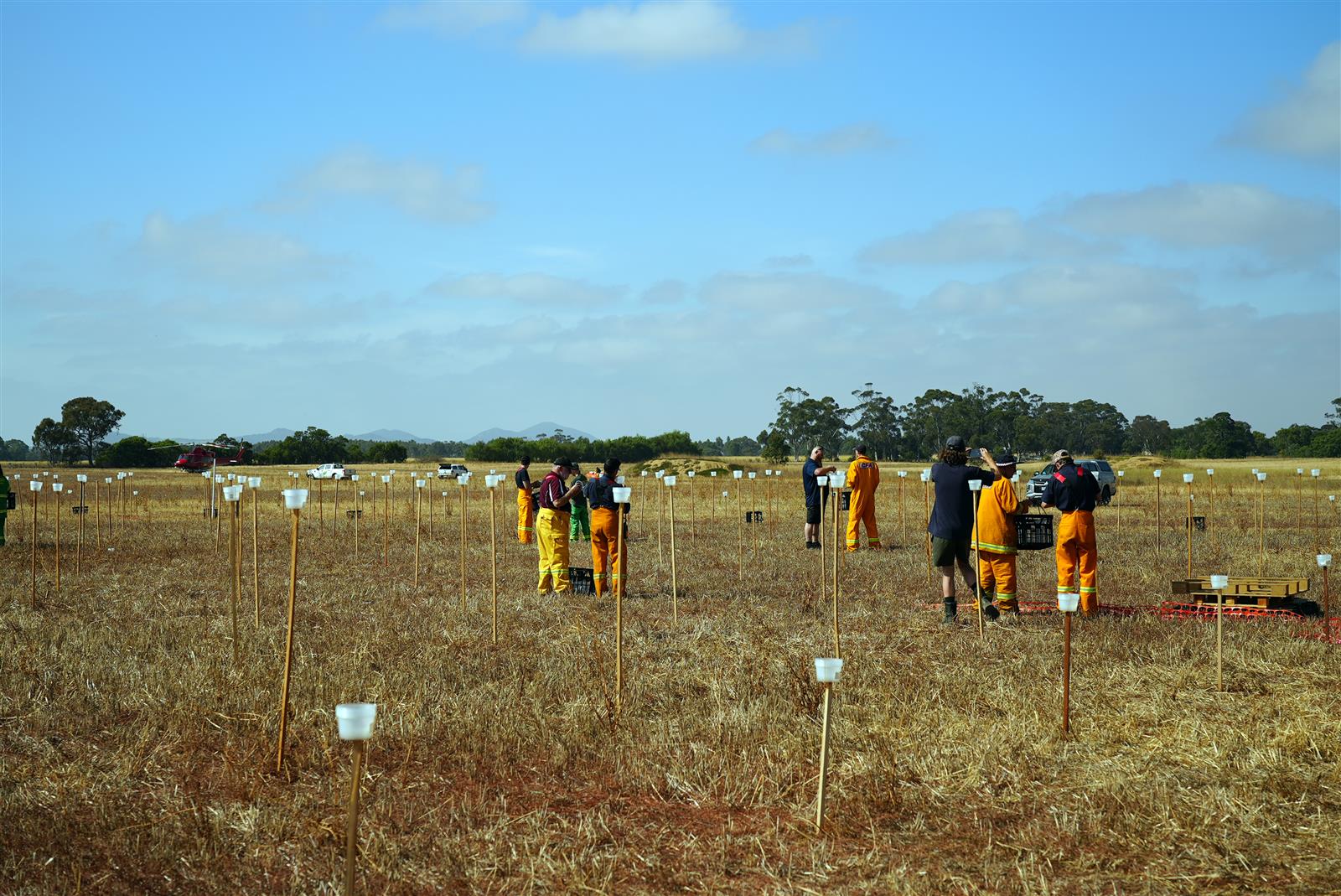 Staff and volunteers collect cups after a water drop
Staff and volunteers collect cups after a water drop
-
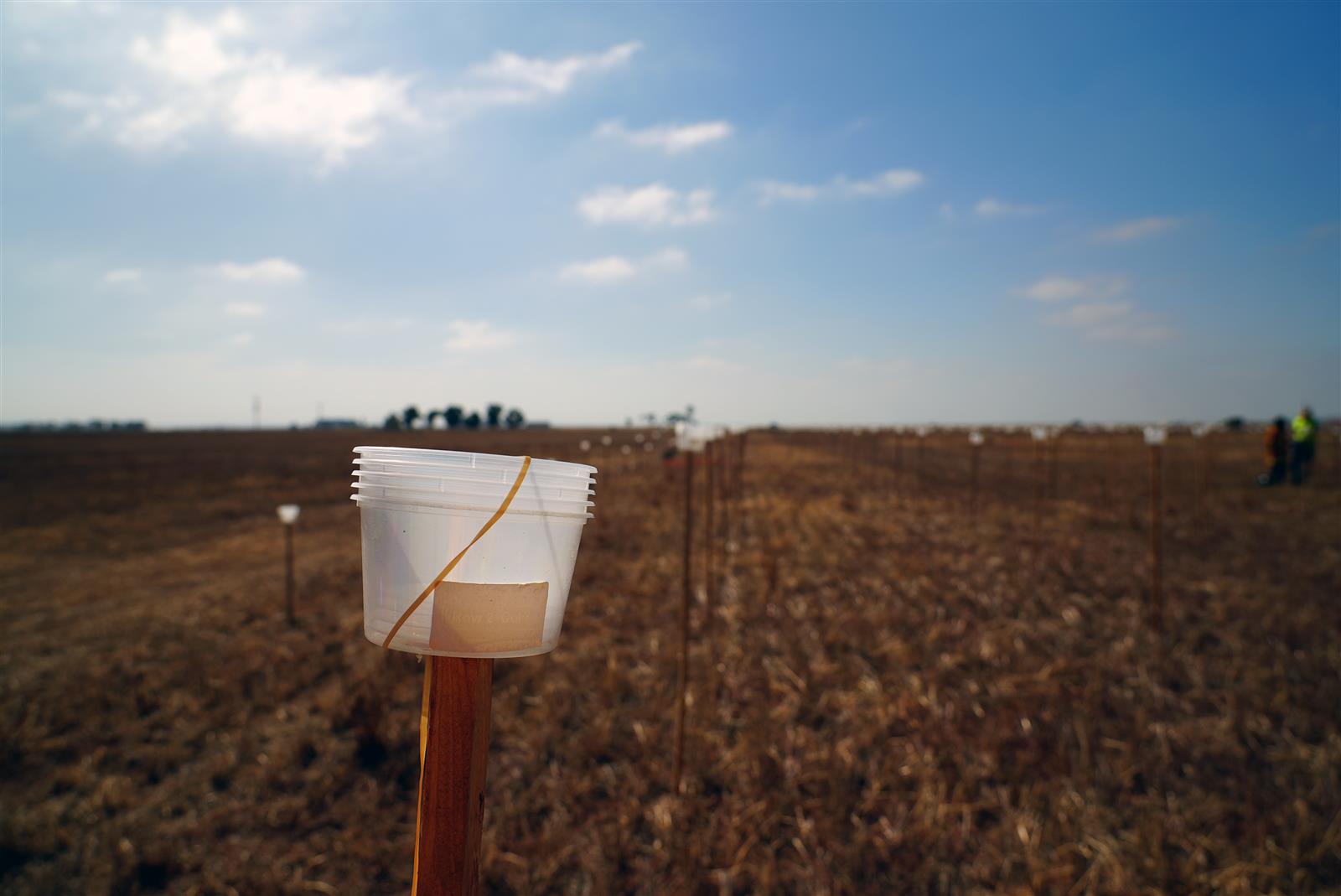 The grid of plastic cups used to collect the water
The grid of plastic cups used to collect the water
-
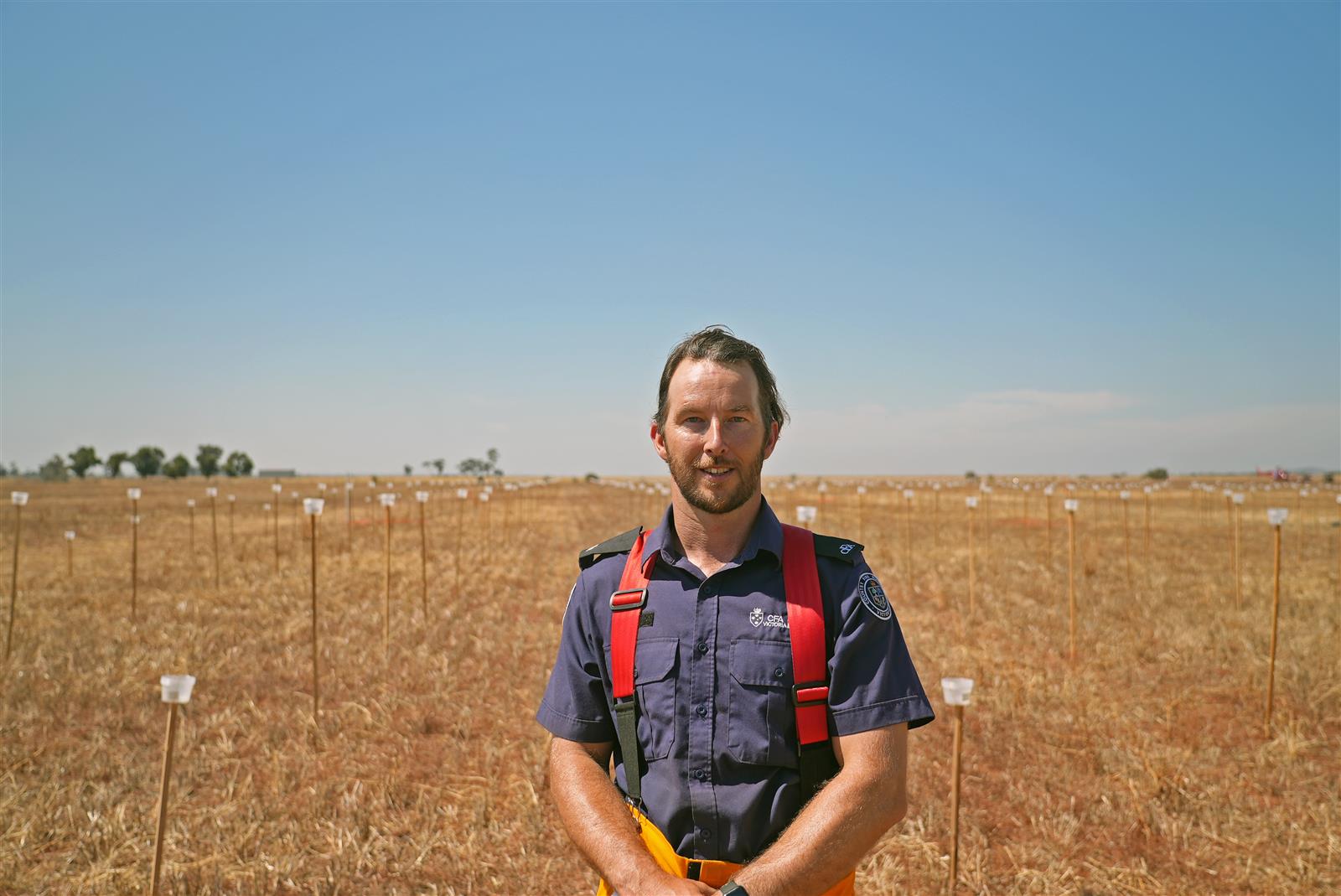 Predictive Services Specialist Andy Ackland in the field
Predictive Services Specialist Andy Ackland in the field